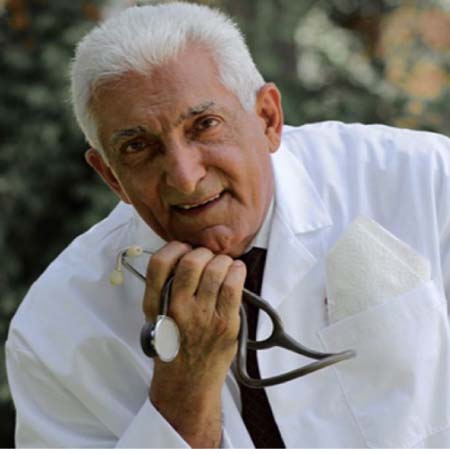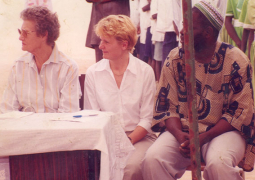
The Greek words “Leukos” and “Heima” are nothing but Leukaemia, which means white blood and it actually means excess of white blood cells in a human body. It is a type of Blood Cancer or Bone Marrow Cancer which encompasses an abundantly huge range of health problems. The white blood cells are produced abundantly and profusely which later on causes Leukaemia. Bone Marrow aids in production of blood and is called as blood factory of the body. In Bone marrow, the blood cells divide to form new blood cells. The old blood cells are replaced by new blood cells, which imply the old blood cells die. But the person starts suffering from the deadly cancer if the old blood cells do not die and there is over production of blood cells as they start dividing at a faster pace. There is excess production of white blood cells in the bone marrow and these white blood cells are known as leukaemia or leukocytes. This further leads to poor immune system and poor resistance power and the patient’s body is unable to fight infections easily.
Then in the year 1970, it was discovered that leukaemia can be treated. In 1970s and 1980s, 70% of the people suffering from leukaemia were treated which was a new ray of hope for leukaemia patients. Yet people don’t realize which disease they are actually suffering from and which disease are they fighting with.
These days several children are seen suffering from leukaemia and this is continuously increasing rapidity. The major reason for this problem is that these children are not breastfed enough so they have weak immune system. Their resistance against several health problems is quite low and therefore they are prone to this deadly cancer. Breastfeeding helps your child develop a strong immune system thereby helping them to fight against various infections during childhood.
The people in developing countries or industrialized countries have higher chances of developing leukaemia. This is due to the fact that people in these countries are continuously exposed to harmful chemicals and smoke. They inhale harmful gases like benzene and formaldehyde, or exposure to atomic gases and radiations, and consumption of preserved and fast food which include injurious preservatives that result in development of leukaemia.
Today, leukaemia can be successfully treated as there are several effective treatments like radiation, chemotherapy along with aminopterin, 6-mercaptopurin, 6-mercaptopurine. The discovery of DNA aided to know the factors causing cancer with minute facts. One of the most effective treatments is bone marrow transplant. The Genetic analysis is considered the best future treatment for leukaemia.
Normal blood cells die after a while and are replaced by new cells which are produced in the bone marrow. The abnormal blood cells do not die so easily, and accumulate, occupying more and more space. As more and more space is occupied by these faulty blood cells there is less and less space for the normal cells - and the sufferer becomes ill. Quite simply, the bad cells crowd out the good cells in the blood.
In order to better understand what goes on we need to have a look at what the bone marrow does.
Function of the bone marrow
The bone marrow is found in the inside of bones. The marrow in the large bones of adults produces blood cells. Approximately 4% of our total bodyweight consists of bone marrow.
There are two types of bone marrow: 1. Red marrow, made up mainly of myeloid tissue. 2. Yellow marrow, made up mostly of fat cells. Red marrow can be found in the flat bones, such as the breast bone, skull, vertebrae, shoulder blades, hip bone and ribs. Red marrow can also be found at the ends of long bones, such as the humorous and femur.
White blood cells (lymphocytes), red blood cells and platelets are produced in the red marrow. Red blood cells carry oxygen, white blood cells fight diseases. Platelets are essential for blood clotting. Yellow marrow can be found in the inside of the middle section of long bones.
If a person loses a lot of blood the body can convert yellow marrow to red marrow in order to raise blood cell production.
White blood cells, red blood cells and platelets exist in plasma - Blood plasma is the liquid component of blood, in which the blood cells are suspended.
Fast facts on bone marrow
Here are some key points about bone marrow. More detail and supporting information is in the main article.
A bone marrow transplant can save the lives of people battling leukemia, lymphoma and other blood cancers.
At birth, all bone marrow is red. As humans age, red marrow increasingly begins to convert to yellow marrow.
In adults, around half of the bone marrow is red and half is yellow.
200 billion new blood cells are made by the bone marrow every day.
Healthy bone marrow manufactures between 150,000 and 450,000 platelets per microliter of blood, the amount of blood that fits on the head of a pin.
Bone marrow contains mesenchymal and hematopoietic stem cells.
Around 10,000 people in the US are diagnosed each year with diseases that require bone marrow transplants.
7 out of 10 people who require a bone marrow transplant do not have a matching donor in their family, and rely on the registry of bone marrow donors to find a match.
The process for matching a patient with a donor involves comparing human leukocyte antigen (HLA) types in order to find a match.
Several diseases, often incurable, pose a threat to bone marrow and prevent bone marrow from turning stem cells into essential cells.
Types of leukaemia
Chronic and Acute
Experts divide leukaemia into four large groups, each of which can be Acute, which is a rapidly progressing disease that results in the accumulation of immature, useless cells in the marrow and blood, or Chronic, which progresses more slowly and allows more mature, useful cells to be made. In other words, acute leukaemia crowds out the good cells more quickly than chronic leukaemia.
Symptoms of leukaemia
. Blood clotting is poor - as immature white blood cells crowd out blood platelets, which are crucial for blood clotting, the patient may bruise or bleed easily and heal slowly - he may also develop petechiae (a small red to purple spot on the body, caused by a minor haemorrhage).
.Affected immune system - The patient’s white blood cells, which are crucial for fighting off infection, may be suppressed or not working properly. The patient may experience frequent infections, or his immune system may attack other good body cells.
.Anaemia - As the shortage of good red blood cells grows the patient may suffer from anaemia - this may lead to difficult or laboured respiration (dyspnoea) and pallor (skin has a pale colour caused by illness).
. Other symptoms - Patients may also experience nausea, fever, chills, night sweats, flu-like symptoms, and tiredness. If the liver or spleen becomes enlarged the patient may feel full and will eat less, resulting in weight loss. Headache is more common among patients whose cancerous cells have invaded the CNS (central nervous system).
.Precaution - As all these symptoms could be due to other illnesses. A diagnosis of leukaemia can only be confirmed after medical tests are carried out.
What causes leukaemia
Experts say that different leukaemia’s have different causes. The following are either known causes, or strongly suspected causes:
.Artificial ionizing radiation
.Viruses - HTLV-1 (human T-lymph tropic virus) and HIV (human immunodeficiency virus)
.Benzene and some petrochemicals
.Alkylation chemotherapy agents used in previous cancers
.Maternal foetal transmission (rare)
. Hair dyes
.Genetic predisposition - some studies researching family history and looking at twins have indicated that some people have a higher risk of developing leukemia because of a single gene or multiple genes.
.Down syndrome - people with Down syndrome have a significantly higher risk of developing leukaemia, compared to people who do not have Down syndrome. Experts say that because of this, people with certain chromosomal abnormalities may have a higher risk.
§Electromagnetic energy - studies indicate there is not enough evidence to show that ELF magnetic (not electric) fields that exist currently might cause leukaemia. The IARC (International Agency for Research on Cancer) says that studies which indicate there is a risk tend to be biased and unreliable.
Treatments for leukaemia
As the various types of leukaemias affect patients differently, their treatments depend on what type of leukaemia they have. The type of treatment will also depend on the patient’s age and his state of health.
In order to get the most effective treatment the patient should get treatment at a centre where doctors have experience and are well trained in treating leukaemia patients. As treatment has improved, the aim of virtually all health care professionals should be complete remission - that the cancer goes away completely for a minimum of five years after treatment.
Treatment for patients with acute leukaemia’s should start as soon as possible - this usually involves induction therapy with chemotherapy, and takes place in a hospital.
When a patient is in remission he will still need consolidation therapy or post induction therapy. This may involve chemotherapy, as well as a bone marrow transplant (allergenic stem cell transplantation).
.Patients with Chronic Lymphocytic Leukaemia (CLL) may not receive any treatment for a long time after diagnosis. Those who do will normally be given chemotherapy or monoclonal antibody therapy. Some patients with CLL may benefit from allergenic stem cell transplantation (bone marrow transplant).
.Rabbit antibodies help Leukaemia patients - scientists from Virginia Commonwealth University reported in the journal Bone Marrow Transplantation (July 2012 issue) that rabbit antibodies can improve survival and reduce the occurrence of relapses in patients with leukaemia and myelodysplasia who are receiving a stem transplant from an unrelated donor.
Leukaemia patients’ own T-cells achieve remission for over two years - patients who were infused with their own T-cells after they had been genetically altered to fight cancer tumours stayed in full remission for over 24 months. Researchers from the Perelman School of Medicine at the University of Pennsylvania presented their findings at the American Society of Haematology’s Annual Meeting and Exposition in December 2012. All those who took part in the human study had advanced cancers - ten of them had chronic lymphocytic leukaemia, and two children had acute lymphoblastic leukaemia.
All leukaemia patients, regardless of what type they have or had, will need to be checked regularly by their doctors after the cancer has gone (in remission). They will undergo exams and blood tests. The doctors will occasionally test their bone marrow. As time passes and the patient continues to remain free of leukaemia the doctor may decide to lengthen the intervals between tests.
New leukaemia immune cell therapy shows promise - New findings on cell therapy to treat leukaemia bring more encouraging news of the promise that this experimental area of cancer treatment holds for patients for whom conventional approaches do not work.
For further information website www.leukeamiaassociation.com or e mail to azadehhassan@yahoo.co.uk, text to 002207774469/3774469 during from 3-6 pm.
Author DR AZADEH Senior Lecturer at the University of the Gambia W. Africa, Senior Physician, Head of the Department of Obstetrics & Gynaecology Africmed.




